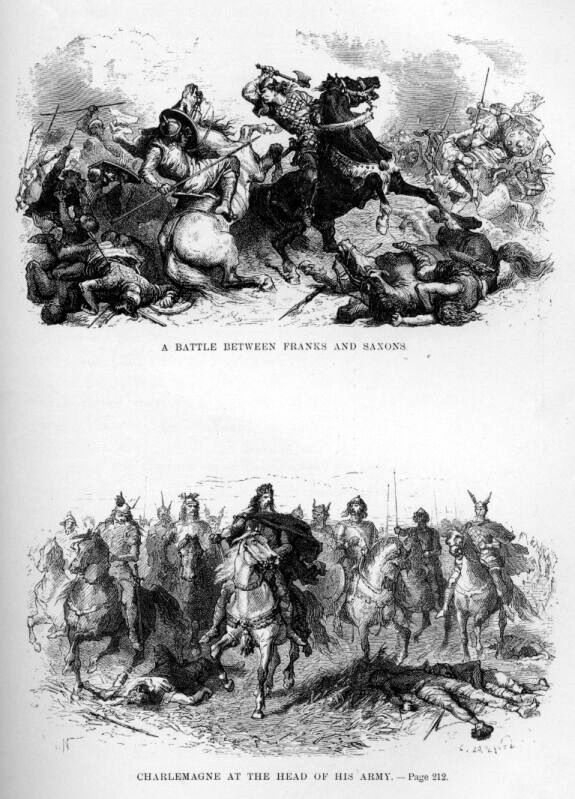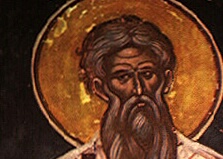|
Paul The New
Paul IV, known as Paul the New (Παῦλος; ? – December 784) was Ecumenical Patriarch of Constantinople from 780 to 784. He had once opposed the veneration of icons but urged the calling of an ecumenical council to address the iconoclast controversy. Later, he resigned and retired to a monastery due to old age and illness. He was succeeded by Tarasios, "''In 784 when Paul IV Patriarch of Constantinople died Tarasius was an imperial secretary, and a champion of the veneration of images''.” who was a lay administrator at the time. Paul the New is venerated as a in the |
August 30 (Eastern Orthodox Liturgics)
August 29 - Eastern Orthodox liturgical calendar - August 31 All fixed commemorations below are observed on ''September 12'' by Eastern Orthodox Churches on the Old Calendar. For August 30th, Orthodox Churches on the Old Calendar commemorate the Saints listed on ''August 17''. Feasts * Afterfeast of the Beheading of St. John the Baptist.September 12/August 30 Orthodox Calendar (PRAVOSLAVIE.RU). Saints * Hieromartyr Philonidis (''Philoneidis'') of Cyprus (3rd century). ''(see also: )'' * 6 Martyrs of Melitene, by drowning.[...More Info...] [...Related Items...] OR: [Wikipedia] [Google] [Baidu] |
Saint
In religious belief, a saint is a person who is recognized as having an exceptional degree of Q-D-Š, holiness, likeness, or closeness to God. However, the use of the term ''saint'' depends on the context and Christian denomination, denomination. In Catholic Church, Catholic, Eastern Orthodox Church, Eastern Orthodox, Anglican Communion, Anglican, Oriental Orthodox, and Lutheranism, Lutheran doctrine, all of their faithful deceased in Heaven are considered to be saints, but some are considered worthy of greater honor or emulation. Official ecclesiastical recognition, and consequently a public cult of veneration, is conferred on some denominational saints through the process of canonization in the Catholic Church or glorification in the Eastern Orthodox Church after their approval. While the English word ''saint'' originated in Christianity, History of religion, historians of religion tend to use the appellation "in a more general way to refer to the state of special holiness t ... [...More Info...] [...Related Items...] OR: [Wikipedia] [Google] [Baidu] |
8th-century Cypriot People
The 8th century is the period from 701 ( DCCI) through 800 ( DCCC) in accordance with the Julian Calendar. The coast of North Africa and the Iberian Peninsula quickly came under Islamic Arab domination. The westward expansion of the Umayyad Empire was famously halted at the siege of Constantinople by the Byzantine Empire and the Battle of Tours by the Franks. The tide of Arab conquest came to an end in the middle of the 8th century.Roberts, J., ''History of the World'', Penguin, 1994. In Europe, late in the century, the Vikings, seafaring peoples from Scandinavia, begin raiding the coasts of Europe and the Mediterranean, and go on to found several important kingdoms. In Asia, the Pala Empire is founded in Bengal. The Tang dynasty reaches its pinnacle under Chinese Emperor Xuanzong. The Nara period begins in Japan. Events * Estimated century in which the poem Beowulf is composed. * Classical Maya civilization begins to decline. * The Kombumerri burial grounds are founded. * ... [...More Info...] [...Related Items...] OR: [Wikipedia] [Google] [Baidu] |
8th-century Patriarchs Of Constantinople
The 8th century is the period from 701 ( DCCI) through 800 ( DCCC) in accordance with the Julian Calendar. The coast of North Africa and the Iberian Peninsula quickly came under Islamic Arab domination. The westward expansion of the Umayyad Empire was famously halted at the siege of Constantinople by the Byzantine Empire and the Battle of Tours by the Franks. The tide of Arab conquest came to an end in the middle of the 8th century.Roberts, J., ''History of the World'', Penguin, 1994. In Europe, late in the century, the Vikings, seafaring peoples from Scandinavia, begin raiding the coasts of Europe and the Mediterranean, and go on to found several important kingdoms. In Asia, the Pala Empire is founded in Bengal. The Tang dynasty reaches its pinnacle under Chinese Emperor Xuanzong. The Nara period begins in Japan. Events * Estimated century in which the poem Beowulf is composed. * Classical Maya civilization begins to decline. * The Kombumerri burial grounds are founded. * ... [...More Info...] [...Related Items...] OR: [Wikipedia] [Google] [Baidu] |
784 Deaths
__NOTOC__ Year 784 ( DCCLXXXIV) was a leap year starting on Thursday of the Julian calendar. The denomination 784 for this year has been used since the early medieval period, when the Anno Domini calendar era became the prevalent method in Europe for naming years. Events By place Europe * Saxon Wars: King Charlemagne begins a campaign in northern Saxony. He ravages Eastphalian territory as far as the Elbe River, while his son, Charles the Younger, defeats a Saxon force in the Lippe Valley. Bad weather hinders Charlemagne's winter campaign in southern Saxony. * Winter – Charlemagne returns to Eresburg and builds a church, probably on the site of the Irminsul (a pagan religious site). Frankish forces based at Eresburg attack rebel Saxon settlements, and take control of the roads. Charlemagne himself takes part in some of these raids. Arabian Empire * Abd al-Rahman I, Muslim emir of Córdoba (Al-Andalus), begins the construction of the Prayer Hall of the Great ... [...More Info...] [...Related Items...] OR: [Wikipedia] [Google] [Baidu] |
Tarasios Of Constantinople
Saint Tarasios (also Saint Tarasius; el, Ἅγιος Ταράσιος; c. 730 – 25 February 806) was the Ecumenical Patriarch of Constantinople from 25 December 784 until his death on 25 February 806. Background Tarasios was born and raised in the city of Constantinople. A son of a high-ranking judge, Tarasios was related to important families, including that of the later Patriarch Photios the Great. Tarasios had embarked on a career in the secular administration and had attained the rank of senator, eventually becoming imperial secretary (''asekretis'') to the Emperor Constantine VI and his mother, the Empress Irene. Originally he embraced Iconoclasm, but later repented, resigned his post, and retired to a monastery, taking the Great Schema (monastic habit). Since he exhibited both Iconodule sympathies and the willingness to follow imperial commands when they were not contrary to the faith, he was selected as Patriarch of Constantinople by the Empress Irene in 784, even thou ... [...More Info...] [...Related Items...] OR: [Wikipedia] [Google] [Baidu] |
List Of Ecumenical Patriarchs Of Constantinople
This is a list of the Patriarchs of Constantinople. Bishops of Byzantium (until 330) *1. St. Andrew the Apostle (38), founder *2. St. Stachys the Apostle (38–54) *3. St. Onesimus (54–68) *4. Polycarpus I (69–89) *5. Plutarch (89–105) *6. Sedecion (105–114) *7. Diogenes (114–129) *8. Eleutherius (129–136) *9. Felix (136–141) *10. Polycarpus II (141–144) *11. Athenodorus (144–148) *12. Euzois (148–154) *13. Laurence (154–166) *14. Alypius (166–169) *15. Pertinax (169–187) *16. Olympianus (187–198) *17. Mark I or Marcus I (198–211) *18. Philadelphus (211–217) *19. Cyriacus I (217–230) *20. St. Castinus (230–237) *21. Eugenius I (237–242) *22. Titus (242–272) *23. Dometius (272–284) *24. Rufinus I (284–293) *25. Probus (293–306) *26. St. Metrophanes (306–314) *27. St. Alexander (314–337) Archbishops of Constantinople (330–451) *28. St. Paul I ("the Confessor") (337–339) *29. Eusebius of Nicomedia (339–3 ... [...More Info...] [...Related Items...] OR: [Wikipedia] [Google] [Baidu] |
Nicetas I Of Constantinople
Nicetas I (or Niketas; Greek: Νικήτας), (? – 7 February 780) was the Ecumenical Patriarch of Constantinople from 766 to 780. He was of Slavic ancestry and he was a eunuch. He was chosen by the Emperor Constantine V as a successor of the Patriarch Constantine II of Constantinople. However, Nicetas was quite unpopular in Constantinople because he was a supporter of iconoclasm. "''Nicetas was viewed as a mere mouthpiece of the emperor and was very unpopular with the iconophile population of Constantinople''." After his death in 780, Nicetas was declared a heretic. He was succeeded by Paul IV of Constantinople
Paul IV, known a ...
[...More Info...] [...Related Items...] OR: [Wikipedia] [Google] [Baidu] |
Feast Day
The calendar of saints is the traditional Christian method of organizing a liturgical year by associating each day with one or more saints and referring to the day as the feast day or feast of said saint. The word "feast" in this context does not mean "a large meal, typically a celebratory one", but instead "an annual religious celebration, a day dedicated to a particular saint". The system arose from the early Christian custom of commemorating each martyr annually on the date of their death, or birth into heaven, a date therefore referred to in Latin as the martyr's ''dies natalis'' ('day of birth'). In the Eastern Orthodox Church, a calendar of saints is called a ''Menologion''. "Menologion" may also mean a set of icons on which saints are depicted in the order of the dates of their feasts, often made in two panels. History As the number of recognized saints increased during Late Antiquity and the first half of the Middle Ages, eventually every day of the year had ... [...More Info...] [...Related Items...] OR: [Wikipedia] [Google] [Baidu] |
Eastern Orthodox Church
The Eastern Orthodox Church, also called the Orthodox Church, is the second-largest Christian church, with approximately 220 million baptized members. It operates as a communion of autocephalous churches, each governed by its bishops via local synods. The church has no central doctrinal or governmental authority analogous to the head of the Roman Catholic Church—the Pope—but the Ecumenical Patriarch of Constantinople is recognized by them as '' primus inter pares'' ("first among equals"), which may be explained as a representative of the church. As one of the oldest surviving religious institutions in the world, the Eastern Orthodox Church has played a prominent role in the history and culture of Eastern and Southeastern Europe. The Eastern Orthodox Church officially calls itself the Orthodox Catholic Church. Eastern Orthodox theology is based on holy tradition, which incorporates the dogmatic decrees of the seven ecumenical councils, the Scriptures, and the teachin ... [...More Info...] [...Related Items...] OR: [Wikipedia] [Google] [Baidu] |
Tarasios
Saint Tarasios (also Saint Tarasius; el, Ἅγιος Ταράσιος; c. 730 – 25 February 806) was the Ecumenical Patriarch of Constantinople from 25 December 784 until his death on 25 February 806. Background Tarasios was born and raised in the city of Constantinople. A son of a high-ranking judge, Tarasios was related to important families, including that of the later Patriarch Photios the Great. Tarasios had embarked on a career in the secular administration and had attained the rank of senator, eventually becoming imperial secretary (''asekretis'') to the Emperor Constantine VI and his mother, the Empress Irene. Originally he embraced Iconoclasm, but later repented, resigned his post, and retired to a monastery, taking the Great Schema (monastic habit). Since he exhibited both Iconodule sympathies and the willingness to follow imperial commands when they were not contrary to the faith, he was selected as Patriarch of Constantinople by the Empress Irene in 784, even thou ... [...More Info...] [...Related Items...] OR: [Wikipedia] [Google] [Baidu] |
Eastern Orthodoxy
Eastern Orthodoxy, also known as Eastern Orthodox Christianity, is one of the three main Branches of Christianity, branches of Chalcedonian Christianity, alongside Catholic Church, Catholicism and Protestantism. Like the Pentarchy of the first millennium, the mainstream (or "Canon law of the Eastern Orthodox Church, canonical") Eastern Orthodox Church is Organization of the Eastern Orthodox Church, organised into autocephalous churches independent from each other. In the 21st century, the Organization of the Eastern Orthodox Church#Autocephalous Eastern Orthodox churches, number of mainstream autocephalous churches is seventeen; there also exist Organization of the Eastern Orthodox Church#Unrecognised churches, autocephalous churches unrecognized by those mainstream ones. Autocephalous churches choose their own Primate (bishop), primate. Autocephalous churches can have Ecclesiastical jurisdiction, jurisdiction (authority) over other churches, some of which have the status of "Auto ... [...More Info...] [...Related Items...] OR: [Wikipedia] [Google] [Baidu] |






